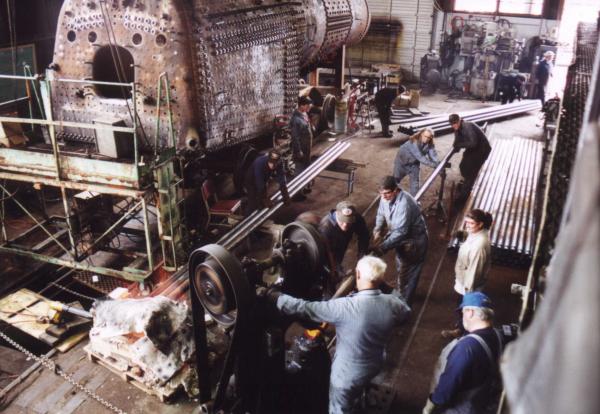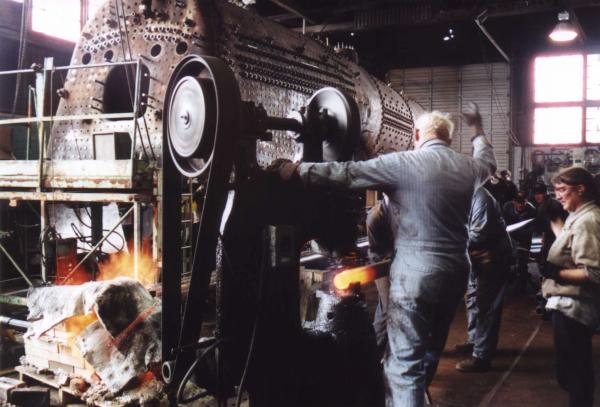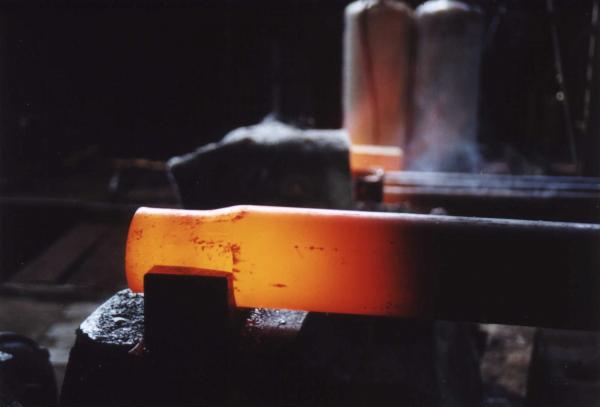Swaging the flues
On June 10 and 11, 2000, we swaged the flues, a process of necking down the end of the flue to a smaller diameter. Only one end is swaged, the firebox end. And only the flues are swaged, the tubes (the small ones around the side and bottom) are not.

This view from the cab of the 700 shows an overview of the process. Flues come in the door of the roundhouse (in the background) to a staging area, then to the furnace on the left, then to the hammer in the foreground, then into the crib to cool. Photo by Terry Thompson

Don Wheeler brings another bundle of flues. Photo by Terry Thompson

The bundle is then brought into the roundhouse. Photo by Terry Thompson

Flues come into the furnace on the right, and depart for the hammer on the left. Photo by Terry Thompson

Jim Vanderbeck tends the fire and rotates the flues so they are heated evenly. Photo by Terry Thompson

Charlie Harrison lifts the flue (his end, anyway) out of the fire. The flues weigh about 110 lb. Photo by Terry Thompson

You're looking into the business end of a "Little Giant 100 lb. Power Hammer". The swaging dies are in two parts, one on the pedestal and one on the hammer. Photo by Terry Thompson

Charlie sets the hot flue down in position. Photo by Terry Thompson

Charlie and Matt Baccitich push the hot flue into the die and rotate it. Another person is pushing on the other end of the flue. Photo by Terry Thompson

Photo by Terry Thompson

Walt Eisenman controls the hammer with his foot, and through hand signals, tells the crew when to advance the flue and when to retract. Photo by Terry Thompson

Flue just coming into the die. Photo by Dale Birkholz

Photo by Dale Birkholz

Photo by Terry Thompson

The flue is checked for size by slipping a guage over it. Photo by Terry Thompson

A still-hot flue is added to the pile in the crib. Photo by Terry Thompson